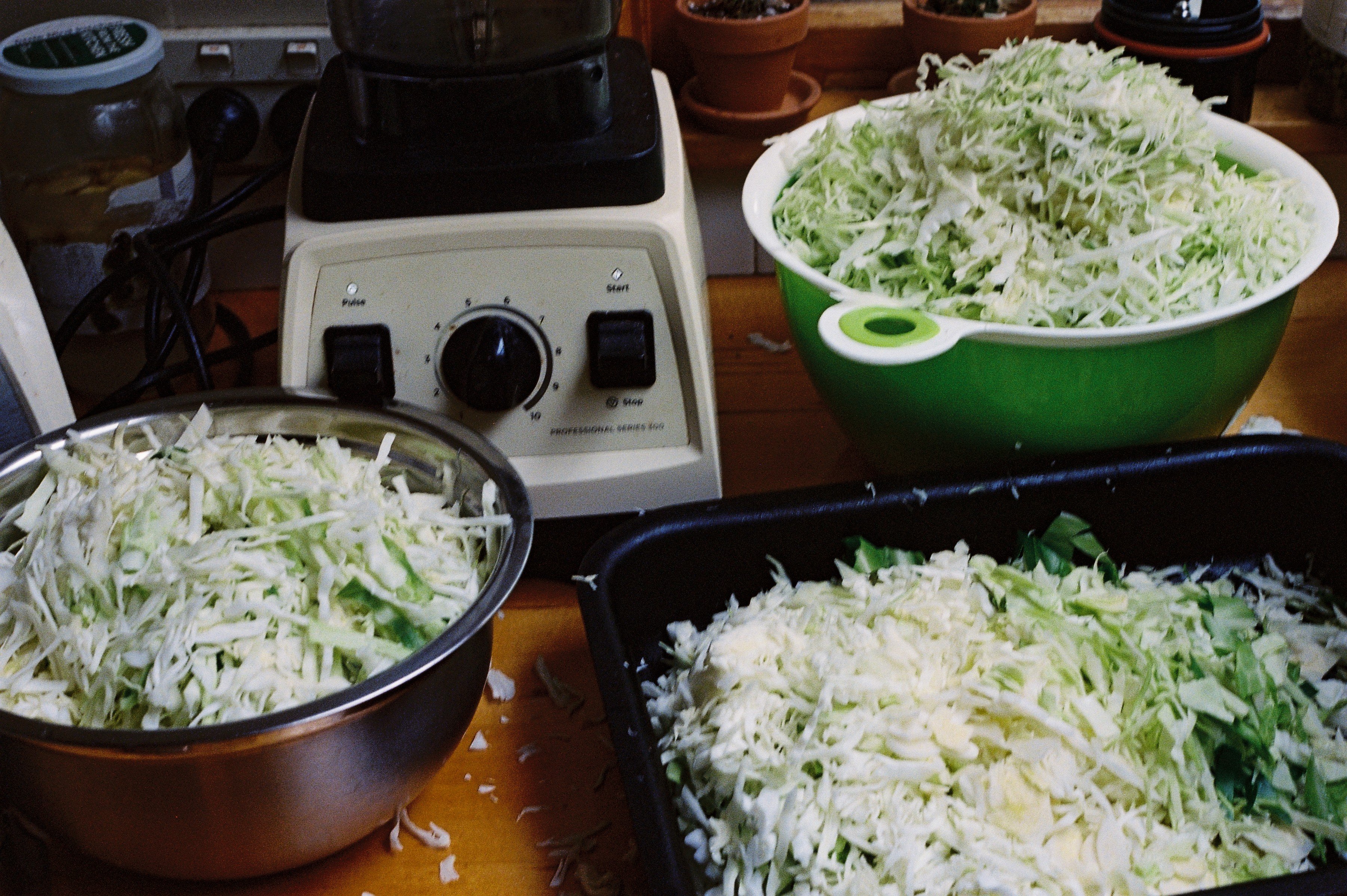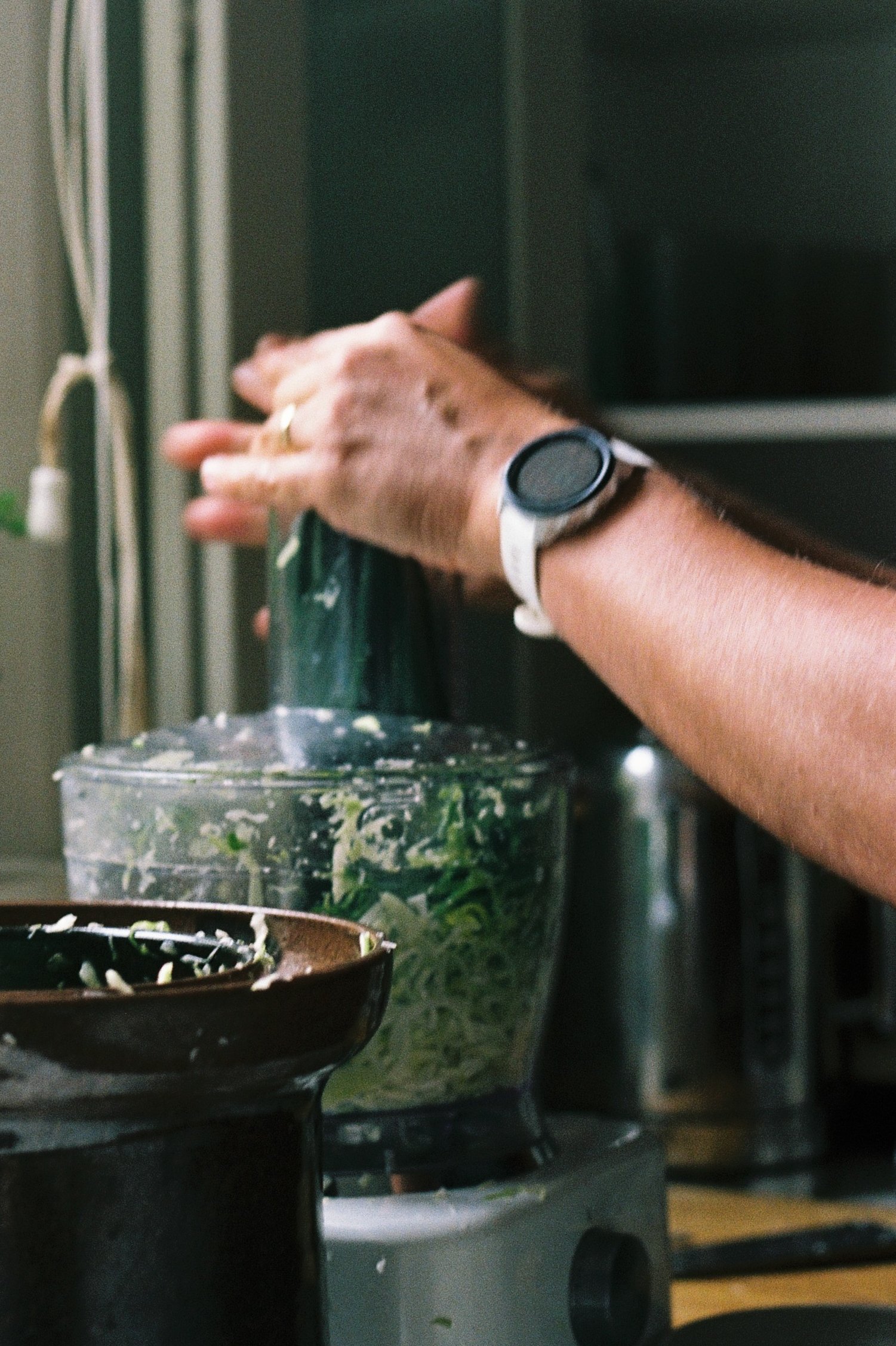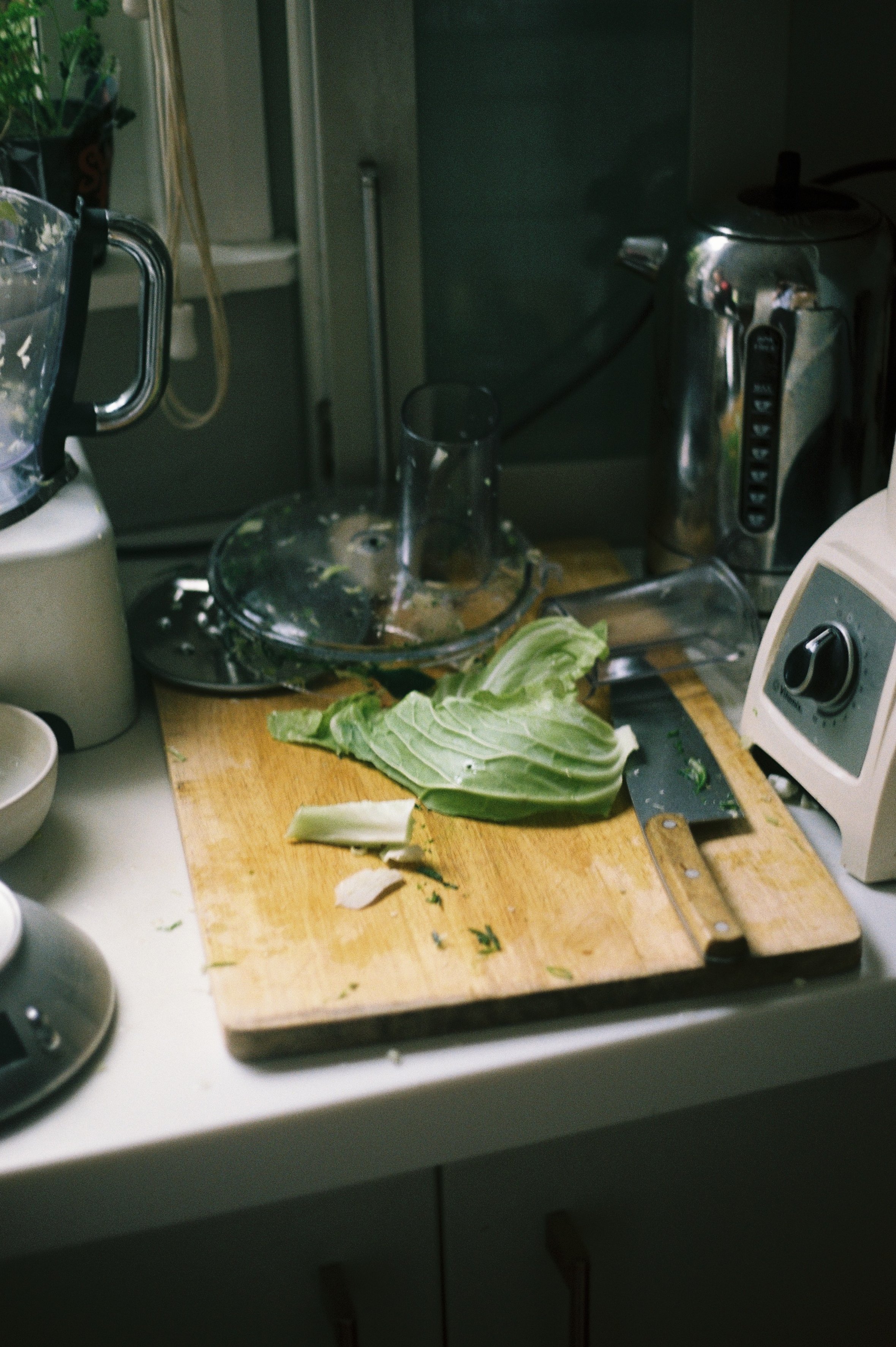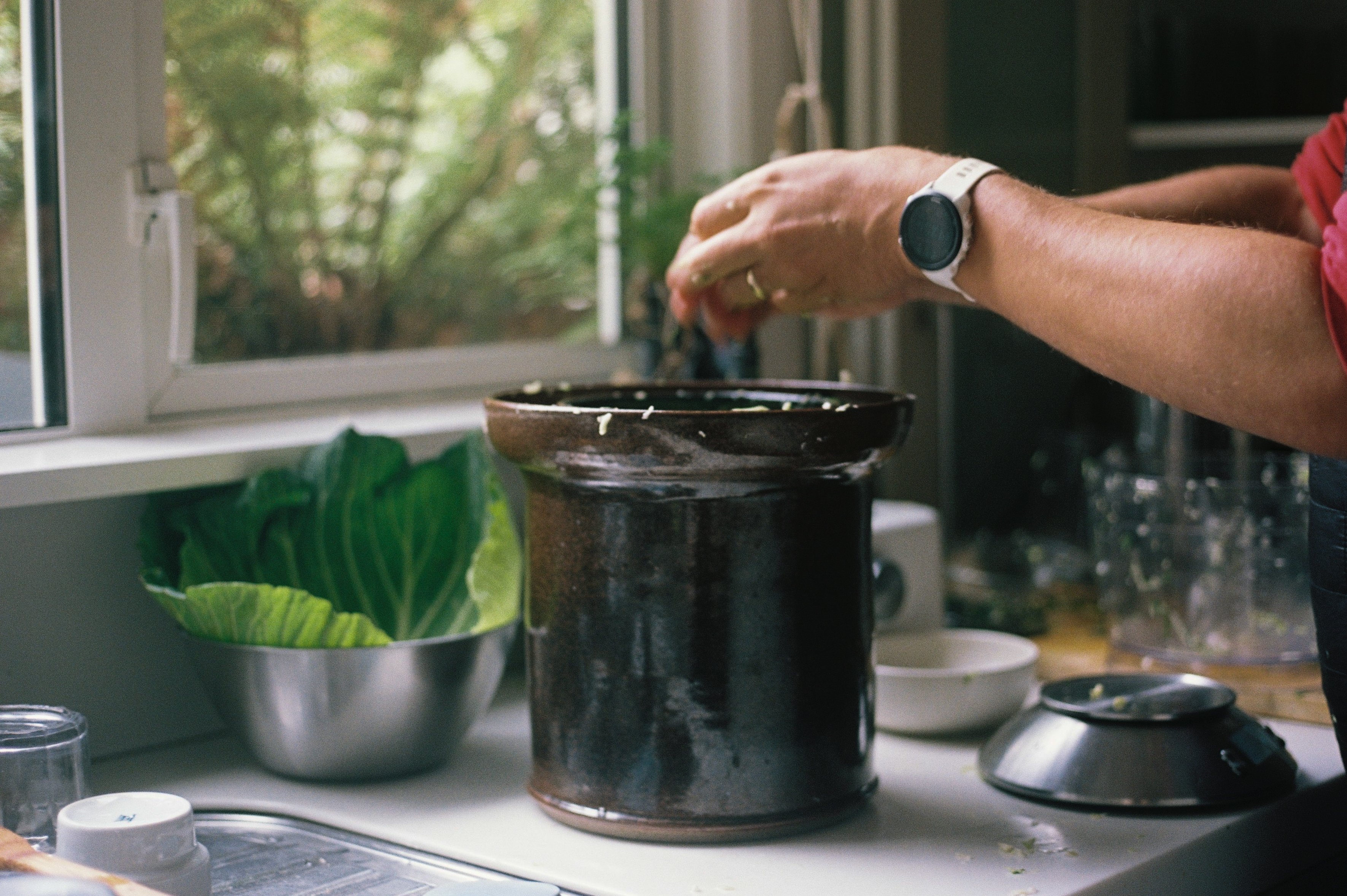Method
Before starting, rigorously clean your hands, utensils and work area to avoid bacterial contamination.
First, remove the outer leaves from the cabbage, discarding the dried leaves and reserving a couple of the freshest and largest ones for covering your sauerkraut at the end of the preparation.
With the help of a mandoline or sharp knife, carefully shred the cabbage.
In a large bowl or bucket, combine the shredded cabbage with sea salt, mixing thoroughly for at least 5 minutes. Massage well and let sit for one hour. Sea salt will drain fluid from the cabbage. Reserve the liquid.
Add seeds and spices of your choice. Feel free to experiment! Here we combined fennel and caraway seeds with peppercorns; chilli powder with coriander and cumin seeds, or parsley seeds with mustard and caraway seeds plus peppercorns again. Massage well.
In thoroughly sterilised jars, pack the cabbage as tight as you can until reaching the 1 cm mark from the top of the jar. Press the cabbage as hard as you can to avoid air pockets. We used 750 ml and 500 ml canning jars, size doesn't matter as soon as you can fill the entire jar. Note that smaller batches have quicker fermenting time.
Once the jars are full, pour the reserved cabbage liquid over packed cabbage and thoroughly cover with the reserved leaves, to ensure cabbage stays immersed. The idea is that the cabbage remains fully submerged during the fermentation process.
Now, option one is to seal the jars. On the first week, open and close your jar once per day to help evacuate extra air, reducing the risk of overflow and contamination. Option two, place a zip lock bag, filled with water, on top of the cabbage leaves. The bag has to cover the entire surface over 3 cm height, heavy enough to keep pressure. This pressure on the mixture is to avoid the air bubbles to come up and the sauerkraut to dry out. The advantage is that this method is suited to vessels larger than a standard jar.
Let the jar sit in a dark space for 7 to 20 days. The apparition of bubbles, foam or white scum is usual, that is fermentation in action. Remove potential scum before placing in the fridge. However, any trace of mould should be removed immediately and not eaten. Carefully check if remaining fermented cabbage has been affected before consuming.
After opening, this sauerkraut will keep up in the fridge for 1 to 2 months in a sealed jar. As long as the cabbage tastes delicious, it is good to eat. Our first batch didn't last two weeks.
*Also pictured in this recipe is the technique Benoit makes for the house. He is using a repurposed bucket with a fermenting lid to regulate the air during the fermentation process, so he doesn't have to open and close the bucket in the first week. These tools are practical to produce a larger volume of sauerkraut, quicker, so that we can go through a month of supply for several people. Through this process, after the fermenting period, Benoit will transfer the sauerkraut into sterilized glass jars and store them in the fridge, ready to savour.
We understand beginners might not start producing kilos of sauerkraut in their first intent, so we kept the recipe's write-up for small production—no need to invest in particular tools either. Enjoy!









